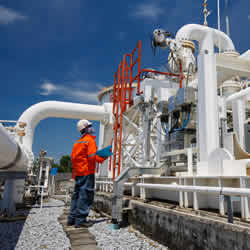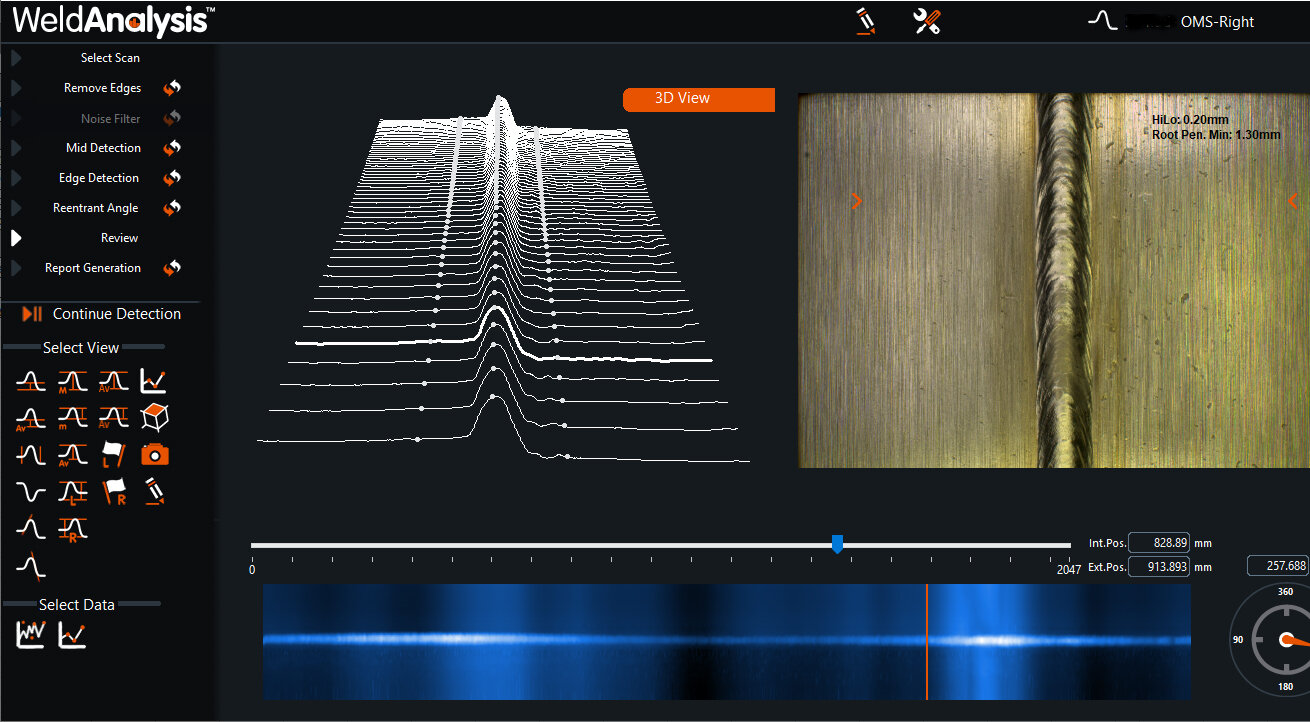Why Pipeline Welding Inspection is Essential for Long-Term Pipeline Security
Why Pipeline Welding Inspection is Essential for Long-Term Pipeline Security
Blog Article
Advanced Techniques in Pipe Welding Assessment: Advancements and Technologies for Boosted Accuracy and Integrity in Weld Assessment
The landscape of pipe welding assessment is undergoing a considerable makeover, driven by advanced methods that assure to enhance both accuracy and integrity in weld evaluations. Technologies such as computerized evaluation systems and progressed imaging modern technologies are redefining traditional practices, while non-destructive screening methods ensure material stability is kept. As these technologies progress, they not just boost issue detection rates however additionally make it possible for more efficient upkeep techniques. Nonetheless, the implications of these improvements expand past instant advantages, elevating essential questions about future practices and standards in the industry.

Relevance of Weld Examination
Making certain the integrity of pipe welds is vital to the overall safety and dependability of commercial systems. Strenuous examination of welds is important to the lifecycle of pipe infrastructure.
The value of weld examination extends beyond mere conformity with regulative criteria. It functions as a proactive action to determine and remedy blemishes, such as insufficient combination, porosity, or splits, prior to they escalate into severe concerns. Efficient evaluation techniques additionally contribute to the durability of pipes, minimizing upkeep costs and enhancing functional effectiveness.
Additionally, thorough weld inspections foster trust fund amongst stakeholders, including governing bodies, capitalists, and the areas offered by these pipes. By making sure that all welds meet the required requirements, companies can minimize threats and promote their online reputations. In recap, weld evaluation is crucial not just for operational integrity but likewise for the more comprehensive effects it holds for safety and environmental stewardship.
Automated Inspection Solutions
The combination of automated assessment systems in pipe welding has actually revolutionized the technique to guaranteeing weld top quality and integrity. These systems utilize innovative robotics and synthetic knowledge to perform evaluations that are not just much faster but likewise a lot more regular than conventional approaches. Automated systems can cover extensive lengths of pipes successfully, capturing data that human assessors could neglect as a result of fatigue or environmental problems.
Among the key advantages of computerized inspection systems is their capability to run in harmful environments, reducing the risk to human examiners. They use different non-destructive screening (NDT) methods, such as ultrasonic screening and magnetic fragment examination, to assess weld integrity without jeopardizing the structure. The data collected is processed in real-time, enabling prompt responses and punctual rehabilitative activities when flaws are determined.
Furthermore, automated systems assist in the standardization of inspection procedures, ensuring that each weld is evaluated versus constant requirements. This not only enhances the reliability of results yet additionally simplifies conformity with governing criteria. As markets proceed to prioritize security and operational efficiency, the duty of automatic assessment systems in pipeline welding will definitely broaden, paving the means for extra advanced high quality assurance approaches.
Advanced Imaging Technologies
Often employed in modern pipe welding examinations, progressed imaging technologies have considerably improved the capacity to spot and evaluate weld problems. Methods such as electronic radiography, computed tomography, and thermographic imaging supply inspectors with high-resolution images that expose sub-surface problems and architectural incongruities that might be invisible to the naked eye.
Digital radiography utilizes digital sensing units to capture photos, enabling prompt review and boosted image comparison. This causes faster assessments and improved accuracy in recognizing crucial issues. Computed tomography, on the other hand, supplies three-dimensional imaging, enabling examiners to visualize complex geometries and analyze the integrity of welds from numerous angles - Pipeline Welding Inspection. This depth of evaluation is indispensable for discovering problems that typical techniques may forget.
Thermographic imaging uses infrared innovation to detect variants in temperature level, determining areas of potential weakness or stress and anxiety within the weld. These advanced imaging innovations not just enhance issue discovery rates however additionally decrease the moment and resources required for pipeline inspections. Because of this, they play an important function in maintaining pipeline safety and security and dependability, guaranteeing compliance with sector standards while lessening operational threats.
Non-Destructive Examining Approaches
Making use of numerous methods, non-destructive testing (NDT) techniques are essential in pipeline welding examinations, enabling the examination of weld stability without compromising the material's architectural stability. NDT encompasses a range of approaches, consisting of ultrasonic testing (UT), radiographic testing (RT), magnetic important source particle screening (MT), and color penetrant testing (PT) Each method has distinctive benefits and applications depending on the details needs of the examination.
Ultrasonic screening utilizes high-frequency acoustic waves to spot interior imperfections, supplying specific dimensions of weld thickness and integrity. Pipeline Welding Inspection. Radiographic screening utilizes X-rays or gamma rays to generate pictures of the weld, disclosing inner problems that may not be noticeable on the surface. Magnetic bit screening works for finding surface and near-surface discontinuities in ferromagnetic materials, while color penetrant testing highlights surface area cracks by utilizing a colored color
Including these NDT techniques right into pipeline welding assessments boosts the accuracy and dependability of weld evaluations, guaranteeing that possible failings are determined early. As markets require higher requirements for safety go to website and security and performance, the function of NDT in preserving the honesty of welded structures proceeds to be pivotal in pipeline building and upkeep.

Future Trends in Weld Assessment
As we aim to the future of weld analysis, improvements in innovation are poised to change the techniques employed for reviewing pipeline integrity. The assimilation of expert system (AI) and maker knowing in inspection procedures is expected to boost the accuracy of imperfection discovery and predictive upkeep. These technologies permit real-time data evaluation, enabling examiners to recognize prospective issues before they rise right into substantial issues.
Additionally, the usage of drones furnished with innovative imaging systems is obtaining traction. These aerial inspections can cover substantial areas promptly, capturing high-resolution pictures and information that can be evaluated for flaws in hard-to-reach locations. This not just improves security yet also raises efficiency in the inspection process.
In addition, the development of wise sensing units installed in pipe systems offers the capacity for continual surveillance. These sensors can discover adjustments in pressure, temperature, and vibrations, providing important understandings into the health and wellness of the welds visit this site gradually.

Verdict
Finally, the assimilation of sophisticated strategies in pipeline welding evaluation substantially boosts the accuracy and dependability of weld evaluations. Advancements such as automatic evaluation systems, advanced imaging innovations, and non-destructive testing methods play a vital duty in enhancing flaw detection rates and cultivating aggressive maintenance strategies. As these technologies proceed to advance, they will certainly even more make certain the safety and performance of pipeline systems, inevitably adding to the stability of vital facilities.

Report this page